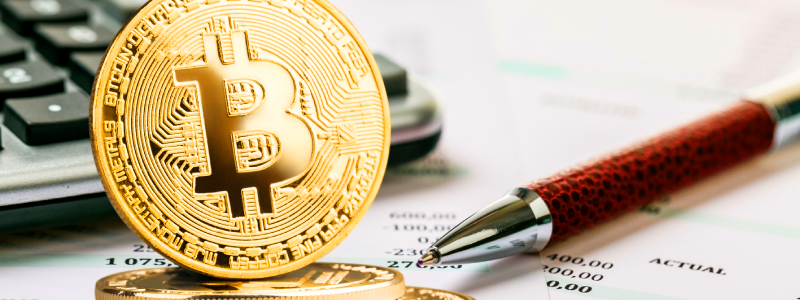Companies are able to issue shares — but they can also repurchase them through share buy-backs. What is a share buyback though, and how do they work?
Companies often perform share buy-backs for a wide range of reasons. In the second half of 2018, ASX-listed companies spent more than $50 billion on buybacks, a dramatic increase over the median figure of $16 billion annually since 2004.
Why do companies buy back their own shares and what is the purpose of a share buy-back? In simple terms, a share buy-back provides a company with the opportunity to purchase shares from some or all of its shareholders.
The rules around share buy-backs are governed by the Corporations Act 2001. There are a number of different types of share buy-back, each of which is associated with a specific procedure that must be followed.
What is the Purpose of a Share Buy-Back?
A company typically performs a share buy-back in order to increase the value of individual shares. In some cases, minimising the total number of shares available in a company — or reducing a company’s float — can increase the value of shares.
- Buy-backs can also be performed when:
- A company becomes insolvent and is liquidated
- When a shareholder voluntarily exits a company
- When an individual shareholder declares bankruptcy, dies, or sufferers a permanent total disability
- When a vesting shareholder leaves the business and is obligated to forfeit their unvested shares
The constitution of a company or its shareholder’s agreement may dictate specific circumstances in which a company may require a share buy-back. This practice can help to protect a company from having shareholders that have no specific involvement with the business.
If a shareholder dies, for example, the shares they own are likely to become a part of their estate. A company may offer to repurchase their shares at fair market value instead. The shareholder’s agreement of a company can also require that unvested shares be repurchased by a company in this scenario.
Vested shares are shares that a shareholder is able to act on and sell, in contrast with unvested shares, which can only be disposed of after a specific time period or the fulfilment of specific conditions. Unvested shares occur when a shareholder possesses shares and is unable to fulfil the conditions.
Share buy-backs can also assist a business in reducing its cost of capital, consolidate ownership, adjust important financial metrics, or, in some cases, allow a business to benefit from a temporary undervaluation of stock.
Different Types of Share Buy-Backs
- There are three primary types of share buy-backs available to private companies in Australia. These buy-backs are:
- Equal-access buy-backs
- Selective buy-backs
- Employee share scheme buy-backs
- There are also two additional buy-back categories available to listed companies — on-market buy-backs and minimum holding buy-backs. Each type of buy-back follows a different process. Each buy-back category can also contain subcategories of buy-backs. These subcategories divide buy-backs into two categories:
- Buy-backs of less than 10 percent of the total shares purchased within a 12-month period
- Buy-backs of over 10 percent of all shares purchased within a 12-month period — also referred to as the 10/12 limit
Different types of buy-backs carry different obligations. In most cases buy-backs of over 10 percent of all shares purchased within a 12-month period that exceed the 10/12 limit are subject to greater regulatory scrutiny and more complex company obligations.
- Before a company can conduct a share buy-back, they must fulfil a number of requirements such as:
- Performing a share buy-back must not significantly inhibit the ability of a company to pay creditors
- A buy-back must be performed in accordance with the relevant ASIC procedures
Equal Access Buy-Backs
A company may perform an equal access buy-back in order to invite all shareholders to participate in the buy-back. Shareholders are able to participate in the buy-back in proportion to their shareholding. Importantly, offers under the equal access buy-back scheme can only relate to ordinary shares.
All shareholders are offered a buy-back of their individual percentage of ordinary shares — all individual offers must not be significantly different from any other. A company providing an equal access buy-back offer will provide shareholders with an explanation of the motivation behind the offer and the steps the company will take.
Equal Access Buy-Back Requirements
- A company seeking to perform an equal access buy-back that exceeds the 10/12 limit may be required to fulfil a number of requirements outlined in an ordinary resolution. Before issuing a shareholder’s notice in this case, a company must:
- Lodge a copy of the notice of the meeting with ASIC
- Lodge any accompanying documents that will be issued to shareholders in relation to the equal access buy-back with ASIC
If there is no requirement for a resolution, a company must typically give notice to ASIC and lodge documents 14 days prior to entering a buy-back agreement. The above situation, however, extends the notice period to 21 days.
The notice period obligations that companies are subject to exist in order to protect potential creditors — notice periods provide creditors with forewarning of a buy-back that could potentially affect the creditworthiness of a company. The notice process is performed by submitting an ASIC notification of share buy-back details (Form 280).
Additional Requirements
- A company that performs an equal access buy-back must also:
- Lodge any documents relevant to the equal access buy-back with ASIC, such as any documents that outline the terms of the offer and accompanying documents
- Provide additional information to shareholders known to the company that may assist shareholders in their decision making process
- Once shareholders accept the offer, enter the agreement, and when the transfer of shares to the company is complete, the shares must be cancelled.
- ASIC must also be notified when shares are cancelled
Selective Buy-Backs
A company that intends to offer the repurchase of shares to shareholders in an asymmetric manner must conduct a selective buy-back. This process allows a company to offer a buy-back when it does not intend to offer the buy-back to all shareholders equally. A selective buy-back is appropriate in scenarios in which the company seeks to repurchase the shares of a single departing shareholder.
- A selective share buy-back must be approved by shareholders regardless of the 10/12 limit. Shareholder approval can be obtained via two methods:
- A special resolution of shareholders with 75 percent of votes cast by shareholders. Votes cannot be cast by shareholders whose shares are subject to a buy-back offer
- A unanimous resolution of all shareholders
- Prior to commencing the voting process a company must meet the following requirements:
- The company must lodge a notice of the meeting and all associated documents with ASIC
- The company must provide all information known to the company important to the shareholder decision making process to shareholders via a notice issued a minimum of 14 days prior to the meeting
In the same way as in equal access buy-backs, companies are obligated to provide shareholders with any information that could potentially affect their vote. Subsequent to the acceptance of the selective buy-back offer, the shares must be transferred and cancelled. ASIC must be notified of the cancellation of company shares.
Employee Share Scheme Buy-Backs
Employee share scheme buy-backs can be used by companies to repurchase the shares held by employees or salaried directors under employee share schemes.
The process involved in executing an employee share scheme buy-back is similar to an equal access buy-back — employee share scheme buy-backs require an ordinary resolution of shareholders should it exceed the 10/12 limit. Unlike equal access buy-backs, however, companies that execute employee share scheme buy-backs are subject to less complex obligations.
Companies that execute employee share scheme buy-back, for example, are not required to lodge the buy-back agreement with ASIC. A company must, however, follow the 14-day minimum notification period rule. Shares repurchased in an employee share scheme buy-back must also be cancelled upon transfer, with ASIC notified of the cancellation.
Summary
A company may choose to perform a share buy-back in a broad variety of different scenarios and circumstances. When performing a share buy-back it’s essential to ensure your company is fulfilling regulatory requirements and complying with all relevant laws.
It’s important to ensure that your company is performing the correct buy-back that is relevant for its particular circumstances and is aware of the relevant procedural obligations.
Share buy-backs can be complex, onerous processes. If you’re not sure which buy-back category is right for your company, reach out to Fullstack today for professional guidance.
Was this article helpful?
Related Posts
- Preference Shares
Preference Shares are a separate class of share and have features which can be used…
- Share Vesting Arrangements
Startup founders often protect themselves against 'free-riders' through share vesting arrangements that rewards contribution to…
- Company Structure: Founders Shares vs Ordinary Shares
Structuring ownership of your new business or startup is a complicated process. Understanding the difference…
- Founder Shares & How They Can Help You
The founders of startups and high growth companies face unique challenges. Know how Founder Shares…

















